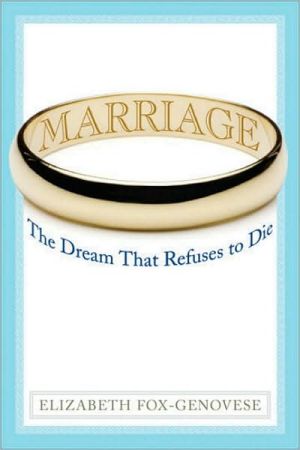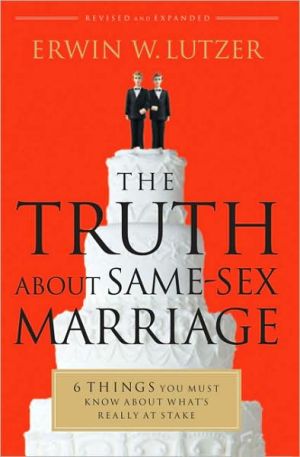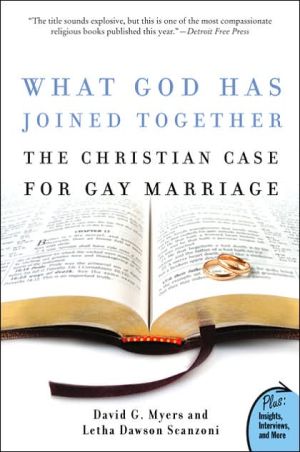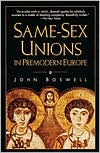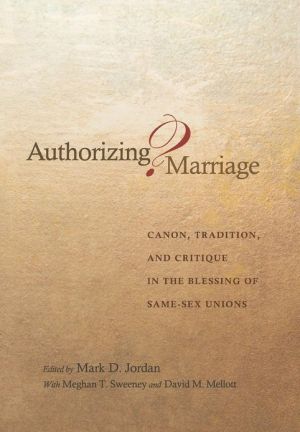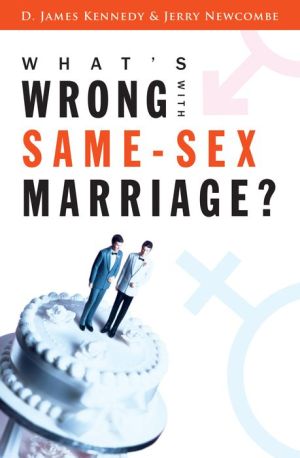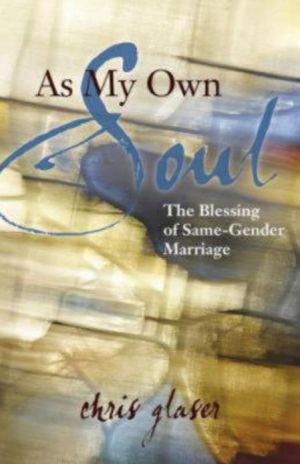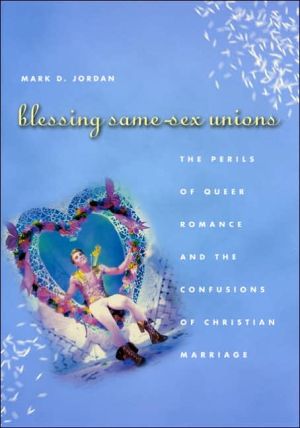Marriage: A Brief Defense of Society's Most Important Institution
"Nearly everywhere and at all times, marriage has enjoyed a privileged status as the primary social unit - the essential bond that created alliances between families and a bridge between the sexes. In joining a man and woman, marriage attempted to hold men to collective social standards, including responsibility for the women they impregnated and the children they fathered, while also stringently hedging in women's sexuality. In short, marriage has always demanded that both men and women...
Search in google:
Nearly everywhere and at all times, marriage has enjoyed a privileged status as the primary social unit—the essential bond that created alliances between families and a bridge between the sexes. In joining a man and woman, marriage attempted to hold men to collective social standards, including responsibility for the women they impregnated and the children they fathered, while also stringently hedging in women’s sexuality. In short, marriage has always demanded that both men and women sacrifice a considerable measure of individual freedom. In marriage, “I” becomes “we,” and “we” frequently extends beyond the couple to extended family, clan, and society. For these reasons, both political and religious authorities typically have taken great care to present marriage as an institution to which individual interests must be subordinated. At the time of her death in January 2007, the celebrated historian Elizabeth Fox-Genovese was worried that these attitudes were in the process of being reversed. In this book, which she was in the midst of preparing for publication at the time of her passing, she argues that marriage is disintegrating under the rising demands that it serve not the good of the whole but the desires of the individual. A union that at one point was used to limit individual “rights” is now claimed as one right among many. The sexual liberation movements of the last forty years have seriously undermined marriage, argues Fox-Genovese, so much so that the institution seems to face the threat of extinction. Even so, she writes, “Marriage for love—the promise of an enduring and engulfing bondbetween a man and a woman—is a dream that refuses to die. . . . It still promises that we will finally be loved as we long to be loved.” That dream is the ultimate theme of this book, a fitting coda to Elizabeth Fox-Genovese’s distinguished career. ElizabethMorris - Library Journal Based on lectures given by Fox-Genovese (Within the Plantation Household), the Emory University historian who died in 2007, Marriage has the strong sense of a passionate and personal speech. Fox-Genovese was firmly pro-marriage, and here she is unabashedly frank in her advocacy. Her broad, measured tone attempts to encompass a wide sweep of human experience and cultures and is just as concerned with modern marriage as its historical context. Fox-Genovese examines marriage as a societal question rather than simply a question of individual preference and comments on divorce, same-sex unions, the sexual revolution, and other issues affecting modern marriage. Her concern is especially for the current state of marriage in American society and the tension between individual rights and responsibilities in such an institution.Squire (The Slender Balance) begins with Genesis and works through biblical and secular history through Martin Luther, deconstructing marriage with a vengeance. Like Fox-Genovese, Squire does not pretend to be unbiased in her negative view of historical marriage, especially in terms of Christian history. The subtitle describes the book as "contrarian," but that is almost too mild a term to describe Squire's sarcastic yet breezy style, which while very amusing, is sure to offend many readers as she gleefully surveys Western history. Squire is mainly concerned with the subjugation of women within the strictures of marriage as a social and religious convention. Both works are passionate intellectual manifestos, with completely different tones and aims, and both are recommended for sociology and women's history collections.
Marriage The Dream That Refuses to Die \ By Elizabeth Fox-Genovese \ ISI BOOKS Copyright © 2008 ISI Books\ All right reserved.\ ISBN: 978-1-933859-62-0 \ \ \ \ Chapter One Male and Female He Created Them \ Until recently, even the harshest critics of marriage never denied that, for better or worse, its nature and purpose have been to unite a man and a woman. Much of the rising tide of criticism leveled at marriage focuses precisely on the tensions of attempting to bridge sexual difference. Men bully, abuse, trivialize, and hopelessly misunderstand women. Women ensnare, emasculate, nag, and cheat on men. The litany goes on, and many of the complaints Archie and Edith Bunker launched at one another in All in the Family sound disconcertingly similar to those of early modern European folk culture or even Aristophanes' comedies. Among the gods of the ancient Greeks, Hera nagged Zeus, and Zeus philandered, strewing children in his wake.\ These first three chapters will offer a series of vignettes intended to illuminate the changing social function of marriage and the current campaign to destroy marriage as a unique and uniquely valuable social bond and the essential cornerstone of cohesive society. Having originated more as a relation between families, tribes, or clans than as a relation between individuals, marriage has gradually been transformed into an exclusively personal relation-a matter of an individual's "right" to specific benefits and privileges and, perhaps above all, community recognition and approval. Thus, the institution that anchored and transmitted legitimate authority has emerged as the frontline target of a comprehensive attack on any notion of legitimate authority, natural or divine. The flurry of opinions on the crisis of marriage and the family obscures the magnitude of this transformation, but we can ill afford to ignore its implications.\ In modern times, complaints about marriage have accelerated. Ironically, this growing dissatisfaction has corresponded with the most sustained attempt to link marriage to romantic love. Love and marriage may, as the song would have it, "go together like a horse and carriage," but by no means necessarily. First let us consider premodern forms of marriage, including the features that have provoked feminists in particular to dismiss all forms of marriage as blatantly patriarchal and oppressive of women.\ Genesis tells us that God created woman and man for each other-"male and female he created them"-and enjoined them to "be fruitful and multiply" (Genesis 1:27-28). And woman He especially created as the true companion for man, who welcomed her as "bone of my bones and flesh of my flesh." The author of Genesis reflects, "Therefore a man leaves his father and his mother and cleaves to his wife, and they become one flesh" (Genesis 2:23-24). Disobedience to God cost Adam and Eve banishment from Eden. God told Adam, "cursed is the ground because of you; in toil you shall eat of it all the days of your life," and He warned Eve that "in pain you shall bring forth children" (Genesis 3:16-17). But even that original sin did not destroy their complementary natures as man and woman, and their expulsion inaugurated the fallen human history of marriage.\ The Old Testament often offers a less than appealing picture of marriage, which helps to explain the outrage of some feminist critics. Beginning with Abraham, the patriarchs fathered children with concubines, took second and third wives, and frequently treated their wives as little more than servants. Even Jacob, with his many admirable qualities and his deep love for Rachel, during the years when Rachel seemed barren, fathered children by her sister Leah, whom he had previously repudiated to marry Rachel. Marriage frequently seemed intended solely to produce sons and to preserve the patrimony of the tribes of Israel. Thus, the daughters of Zelophead are told that they may marry whom they please, provided that they marry only "within the family of the tribe of their father," so that the "the inheritance of the people of Israel shall not be transferred from one tribe to another" (Numbers 36:6-7). In a similar spirit, if a man dies without having a son, his brother must marry the widow, and the first son she bears him "shall succeed to the name of the brother who is dead, that his name may not be blotted out of Israel." And the house of the man who refuses this obligation to build up his brother's house will be called "[t]he house of him that had his sandal pulled off" (Deuteronomy 25:5).\ In these passages, the importance of family and tribe demonstrably trumps the merely human relations of man and woman. Yet the Old Testament, like other ancient sacred texts and myths, also recognizes the force of love, which it frequently depicts as destructive. Men and women pay equally for adultery, to which both are considered susceptible: The man who commits adultery must be killed, and the woman with him (Deuteronomy 22:22). But in most other respects, equality falters. Thus, if a man dislikes his wife or finds some indecency in her, he may divorce her simply by putting a bill of divorce in her hands. During the period of the second Temple, a woman could similarly divorce a man. These rules eerily combine primitive and postmodern views of personal relations, in ways echoed in some of Toni Morrison's fiction. Disruptive passion, prototypically in David's obsession with Bathsheba and its brutal consequences, recur throughout the Old Testament, as do examples of devoted love between a husband and a wife. But the emphasis consistently falls on marriage as the foundational social bond.\ What the Old Testament tells as stories and sets of rules and laws, anthropologists discuss as the forms of social life and social structures. Claude Levi-Strauss, the highly regarded French structuralist anthropologist, has argued that the basic roots of complex societies lie in the exchange of women. Primitive groups, like the early Hebrew tribes, are inclined to marry within the tribe with the goal, as Deuteronomy puts it, of strengthening the house. Modern societies frown on this practice of endogamy. As societies become more complex they begin to favor exogamy, or marriage outside the immediate kin group, and in many societies, including the Brazilian societies studied by Levi-Strauss, exogamous marriage typically means the exchange of women. In other words, the ties between two groups do not result from the vagaries of personal choice that might have sent a boy to another tribe while welcoming one of that tribe's girls in return. In patrilineal societies, men were held responsible for building the strength of the tribe, and women were effectively treated as bargaining chips to cement alliances or consolidate other political goals.\ The role of marriage in the consolidation of political alliances readily appears in the history of ruling families. European ruling houses invariably married to realize political goals and would probably have sacrificed prestige if they had not. One of the most important examples concerns a marriage that did not occur: Elizabeth I, throughout her long reign, entertained a succession of suitors, each of whom she eventually declined. In entertaining them, she was dangling before them the prize of her person and her kingdom, thereby gaining large and small advantages for it. In refusing them, she was protecting her own position as ruler, which the presence of a husband would have compromised, if only by raising the question of her proper wifely deference to him. In the more usual version, the man was the ruler, which reduced the problem of domestic power relations-although it did not necessarily eliminate them, especially when the royal bride came from a powerful family. During the eighteenth and early nineteenth centuries, the Hapsburgs showed a special talent for marrying daughters for maximum political leverage: first the meddlesome Marie Antoinette to Louis XVI, and then the unremarkable but presumably fertile Marie Louise to Napoleon.\ Marriage, as its critics delight in pointing out, has notoriously been used to further the economic interests of families, often in transactions that traded impecunious social distinction for socially lackluster wealth. Such transactions are as old as marriage itself, even when they are more symbolic than substantive. In sealing a marriage, the family of the bride or groom offered gifts and tribute to the other, and in some instances gifts were exchanged. The gift has figured as a powerful symbol in virtually all cultures-the tangible embodiment and confirmation of intangible promises and intentions. In ancient societies, the gift frequently took the form of a bride price-a sum of money, a bundle of goods, or even a specified number of years of work for the bride's family. Jacob, you will recall, having worked seven years for Leah, whom he did not wish to marry, worked another seven for Rachel, whom he did.\ The traces of bride price and its more familiar counterpart, the dowry, persist in various forms in much of the world, although for significant reasons, which will become apparent, they have largely disappeared in the economically developed and highly individualistic Western nations. While the bride price is paid by the prospective groom's family to the family of the bride, the dowry is paid by the family of the prospective bride to the family of the groom. The logic is simple: In societies or social classes that depend heavily upon the labor of women and value reproduction, men pay a bride price to the families of the prospective bride for the loss of her services; in societies or social classes in which the status, wealth, education, or military prowess of men outweighs the economic value of the woman's labor and fertility, her family pays a dowry to his. Contemporary India offers a clear example. There, the two lower castes, which perform heavy labor, have retained the practice of bride price, while the two upper castes, which specialize in the professions, politics, and business, have adopted the practice of dowry-in theory to compensate the man's family for the cost of his education.\ Since the Middle Ages, Western European society has favored the dowry, although women's labor long remained essential to peasant families and cases of outright wife-selling may be found as late as the nineteenth century, and American society has followed suit. Among the upper classes, dowries were often substantial, and the inability to amass them-or to amass an adequate dowry for only one daughter-could result in a young woman's failure to marry. Convents provided an alternative to marriage and permitted a young woman to leave her parents' home, but they, too, required dowries, albeit usually more modest ones than those demanded by the greedy families of eligible young men. Dowries also afforded a unique way to advance the social standing of a wealthy but not noble family. In a world divided into estates, which although less rigid than Indian castes were notably less flexible than modern class systems, a sufficiently lucrative dowry might suffice to move a young French woman of the third estate into the second estate-the nobility. As the practice spread, especially during the eighteenth century, it earned the quaintly inelegant description of "manuring one's fields."\ After the French Revolution abolished the system of estates, the French joined the British and a growing number of European societies in the comparative fluidity of a class system that granted growing freedom to mere wealth in determining social standing. The impact on marriage, especially among the wealthier and better born, was immediate and is revealingly recorded in the great nineteenth-century novels. Those developments introduced a new, if seriously limited, measure of sexual "equality" into marriage, which opened new opportunities but simultaneously eroded the strength of marital bonds (the next chapter will more fully explore those developments). In short, marriage has secured a vast web of social, political, and economic functions.\ Today, under the rising tide of radical individualism, those functions seem nearly invisible, although they remain considerably more important than most Americans want to acknowledge. The ideology of marrying, not marrying, or divorcing, all for love, throws a veil over marriage's more practical dimensions. Bitter divorces, pre-nuptial contracts, child-support payments, and custody battles serve as painful reminders, but the emphasis continues to fall on the quest for personal happiness. For most of history, the social, economic, and political functions of marriage predominated. In many communities, parents and other relatives played an important role in securing suitable spouses for their children. In India, for example, arranged marriages were the rule, and even child marriages were common. Yet even in circumstances in which individuals were positioned to make personal choices, laws that reinforced the relation between marriage and national sovereignty could thwart their intentions.\ In the nineteenth-century southern United States, the Cherokee Indians, who considered themselves a sovereign nation, had strict laws governing marriage between women who were members of the nation and black and white men who were not. Since the Cherokee had a matrilineal society, membership could only be transmitted or conferred through a woman. Over the course of the century, the ability of black men to claim Cherokee citizenship through marriage to a Cherokee woman declined precipitously, as the Cherokee became more race conscious and more protective of their national status. They correctly viewed marriage as an integral part of their sovereignty.\ The combined weight of the social, political, and economic functions of marriage underscores its significance as the foundational social unit. To grasp the relevant perspective demands an extraordinary effort of imagination from those steeped in modern and postmodern assumptions about the nature of the human person and human relations. Some, notably the historian Colin Morris, argue that the individual and a conception of individualism appeared in England as early as the eleventh and twelfth centuries. And there are strong arguments, although not those upon which Morris relies, that Christianity nurtured a specific conception of the individual both with respect to the quest for personal holiness and the sense of individual moral responsibility. Because of the slippery nature of definitions, it is ultimately pointless to quarrel with Morris, but it is essential to understand that most people in Britain, Europe, and throughout the world saw themselves primarily, if not exclusively, as the member of a group, usually a family first and beyond it a clan, tribe, community, or people-a race, as many of them would have said.\ When so large a share of social order depended upon marriage, love could only be viewed as disruptive. Like Greek and Roman myths, medieval European culture abounded with tales of unruly and untamable passions, just as the more popular culture delighted in tales of cuckolded husbands. In Romeo and Juliet, William Shakespeare drew upon a rich tradition of consuming loves that defied the exigencies of political order and political enmities. The middle of the twelfth century witnessed the emergence of a tradition of courtly love that would culminate in the thirteenth and persist into the fourteenth century. Intended to soften and civilize the brutality of early medieval culture, courtly love inaugurated a new vision of love and prescriptions for the ways in which a proper knight should treat his lady. By definition, this lady, the knight's true love, was not his wife, but a lady of beauty and social position whom he served through acts of fealty and valor.\ The cycle of Arthurian legends rapidly became a central piece of the culture of courtly love. Sir Lancelot's love for Guinevere, the wife of King Arthur, figures prominently in the cycle and doubtless influenced the other legends included within it. Among these, a special place belongs to the story of Tristan and Isolde, which did not originate in the cycle but was absorbed into it. According to the best-known version of the tale, written by Gottfried von Strassburg in the first decade of the thirteenth century, Sir Tristan is entrusted by his uncle, King Mark of Cornwall, to go to Ireland to escort the king's prospective bride, the Irish Isolde, to Cornwall. During the voyage, her attendant gives them a love potion, which instills in them an undying passion. Respecting the claims of kinship as well as social and political obligation, they remain on their assigned course: Isolde marries King Mark, and Tristan marries another, also named Isolde, but never consummates the marriage. Tristan's military responsibilities take him away, but after receiving a fatal wound he returns to Cornwall to seek Isolde, who had twice previously saved him from death. His jealous wife foils the plan. Tristan dies desolate, and Isolde, who arrives minutes too late to save him, lays down in his arms and dies with him.\ (Continues...)\ \ \ \ Excerpted from Marriage by Elizabeth Fox-Genovese Copyright © 2008 by ISI Books. Excerpted by permission.\ All rights reserved. No part of this excerpt may be reproduced or reprinted without permission in writing from the publisher.\ Excerpts are provided by Dial-A-Book Inc. solely for the personal use of visitors to this web site.\
Introduction Sheila O'Connor-Ambrose O'Connor-Ambrose, SheilaPt. l Marriage: From Personal Bond to Social Choice1 Male and Female He Created Them 32 Different or Equal? The Compromise of Separate Spheres 233 Marriage on Trial 43Pt. II History; the Family; and the Human Person4 Women and the Family 655 Thoughts on the History of the Family 1096 The Legal Status of Families as Institutions 1297 Historical Perspectives on the Human Person 1378 The Family and John Paul II 157Afterword Robert P. George George, Robert P. 165A Short List of Good Books on Marriage 171Notes 175Index 189
\ Library JournalBased on lectures given by Fox-Genovese (Within the Plantation Household), the Emory University historian who died in 2007, Marriage has the strong sense of a passionate and personal speech. Fox-Genovese was firmly pro-marriage, and here she is unabashedly frank in her advocacy. Her broad, measured tone attempts to encompass a wide sweep of human experience and cultures and is just as concerned with modern marriage as its historical context. Fox-Genovese examines marriage as a societal question rather than simply a question of individual preference and comments on divorce, same-sex unions, the sexual revolution, and other issues affecting modern marriage. Her concern is especially for the current state of marriage in American society and the tension between individual rights and responsibilities in such an institution.\ Squire (The Slender Balance) begins with Genesis and works through biblical and secular history through Martin Luther, deconstructing marriage with a vengeance. Like Fox-Genovese, Squire does not pretend to be unbiased in her negative view of historical marriage, especially in terms of Christian history. The subtitle describes the book as "contrarian," but that is almost too mild a term to describe Squire's sarcastic yet breezy style, which while very amusing, is sure to offend many readers as she gleefully surveys Western history. Squire is mainly concerned with the subjugation of women within the strictures of marriage as a social and religious convention. Both works are passionate intellectual manifestos, with completely different tones and aims, and both are recommended for sociology and women's history collections.\ —ElizabethMorris\ \ \
